USS Albacore: Once the world's fastest submarine, now a museum, marks 70th anniversary

PORTSMOUTH — During a Navy career spanning 27 years and three wars, Bill Apostolos served aboard 12 — yeah, that’s right, 12 — U.S. submarines. One of them was the USS Albacore (AGSS 569).
Apostolos retired as a chief quartermaster following active duty during the Second World War, the Korean War and the Vietnam War. He passed away in 2015 at the age of 91, leaving behind two children and two grandchildren. But this Saturday, he will be the first Albacore veteran to be honored in a new series of events commemorating the submarine’s upcoming 70th anniversary.
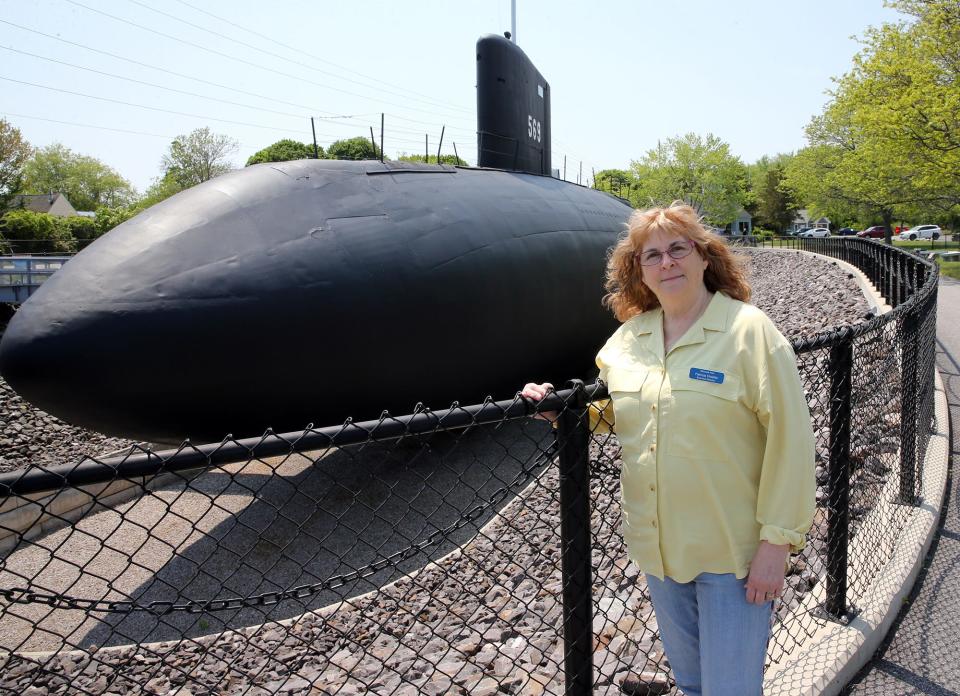
The Albacore has a unique place in Navy lore. She’s one of the more fabled submarines in our history, but didn’t carry weapons and never served in a war. Her legacy is defined simply but eloquently in the sub’s motto Praenuntius Futuri — Latin for “Forerunner of the Future.”
The Albacore was a research vessel, designed and built and maintained right here locally at Portsmouth Naval Shipyard. She was launched in the Piscataqua River in August 1953, and commissioned that December. AGSS 569 was the first vessel to feature the classic teardrop-shaped hull later featured in generations of submarines that followed.
She was also the first boat specifically created to operate underwater. Before the Albacore, submarines were essentially surface ships capable of submerging beneath the ocean’s surface.
According to the website of Albacore Park, where the sub now sits at 600 Market St. in Portsmouth as a unique museum, she was used to test “control and propulsion systems, sonar equipment, dive brakes, escape mechanisms, and various innovative theories and equipment.” She obtained a world-record speed of nearly 40 mph in 1966, making her the fastest sub on the planet at that time.
During a special retirement ceremony at the Yard in September 1972, the Albacore was reportedly described as “the submarine that gave its body to science.” She was decommissioned three months later.
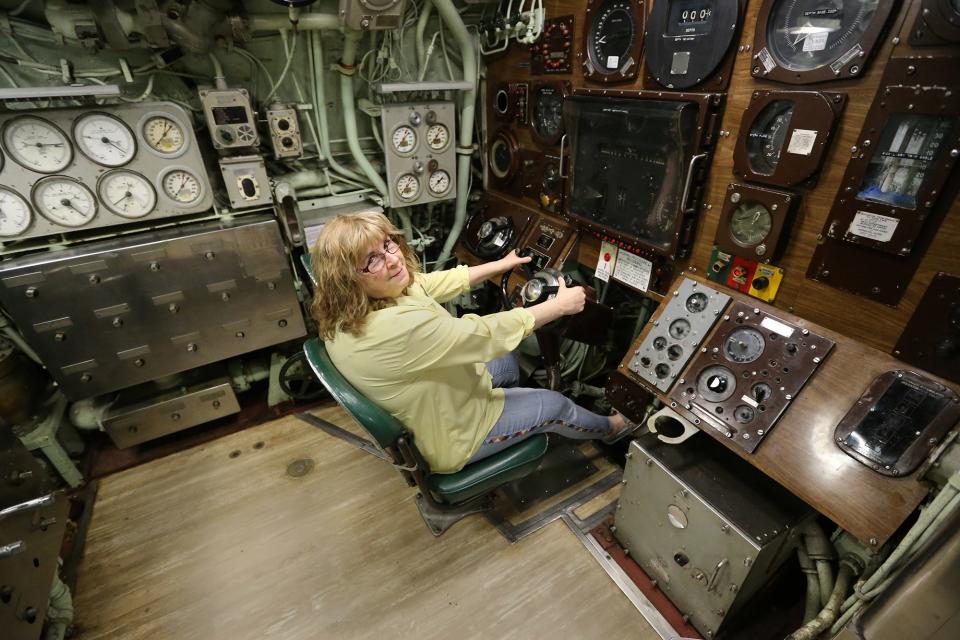
Remembering the crew of the Albacore
No matter how special a vessel might be, she’s ultimately only as good as her crew. So as Albacore Park counts down to the submarine’s 70th birthday this December, a different former crew member of AGSS 569 will be honored each Saturday from the end of this month into November.
As it appears the order of honorees was scheduled alphabetically, Apostolos was perhaps fated to be the first. But it’s also pretty fitting that this member of the Greatest Generation should be the first so honored.
Although born in Rhode Island, Apostolos later moved to New Hampshire and attended Central High School in Manchester. He joined the Navy during World War II and, as previously noted, served aboard an even dozen submarines during his long military career.
More local news: Green Elephant owners opening Thai bistro in Portsmouth. Here's what to expect.
In addition to service aboard the Albacore, Apostolos was also on the USS Flying Fish (SS 229) during the famous “Hellcats of the Sea” World War II patrols in the Sea of Japan, according to his obituary. These daring attacks helped end the fighting in the Pacific – and also served as basis for the 1957 film Hellcats of the Navy, the only movie to star Ronald and Nancy Reagan together.
Apostolos spent five years as chief quartermaster aboard the Albacore during his career at sea, and when he died his obituary requested those who wished to honor him to send donations to Friends of Albacore.
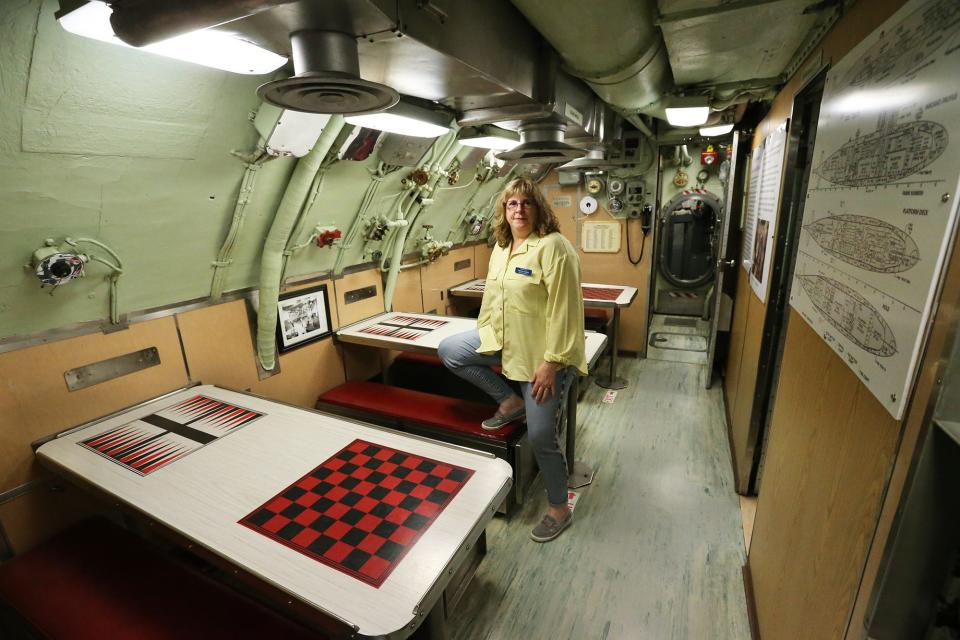
Kenneth Latchaw, the current president of Albacore Park’s board of directors, also served in uniform aboard the historic sub. He will be one of the veterans honored later this year.
While his own stint aboard the Albacore was about 18 months, Latchaw says he served with men assigned to the same vessel for more than ten years – a highly unusual occurrence. But because she was a “one-of-a-kind” submarine, many aspects of the Albacore were unusual.
“Albacore was a floating laboratory,” he said this week. “Albacore was a test platform. Many times they pushed this new technology to the maximum.”
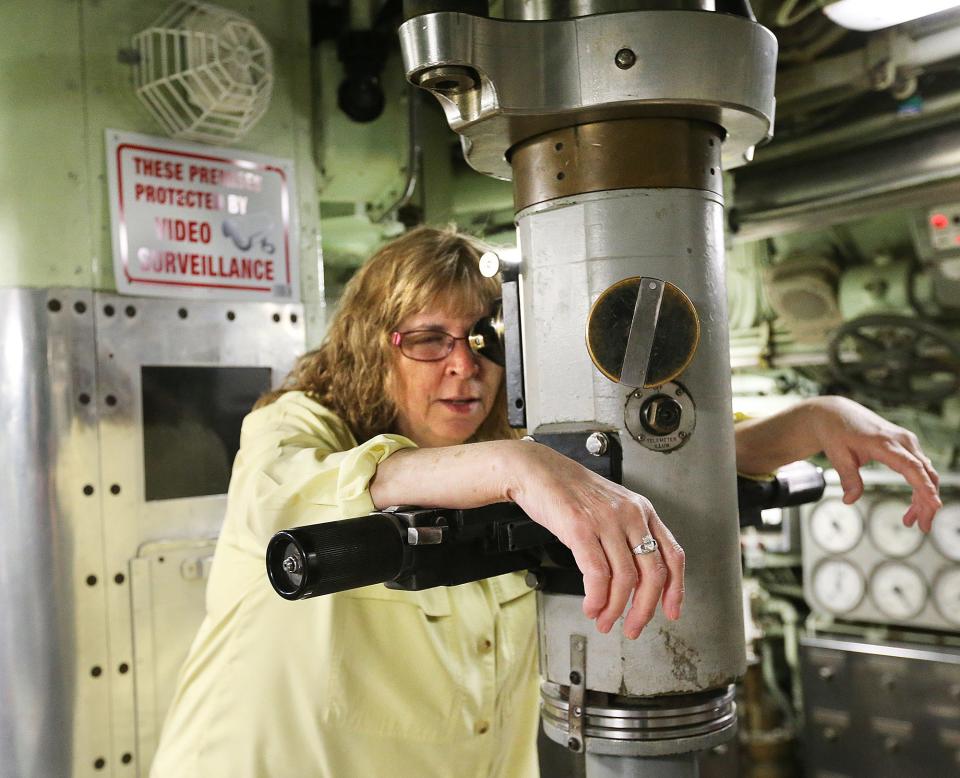
As a result, he noted, the Navy made a point of making sure those manning key positions on board were highly qualified and experienced. The importance of their work is immeasurable — once a particular new system or piece of equipment had been perfected aboard AGSS 569, it would then be incorporated into other subs in the fleet.
In Latchaw’s case, he was a young seaman who had just been transferred from the USS Jallao (SS 368), an old World War II diesel-powered sub slated for decommissioning. He likens the experience to being transferred from the past into the future.
“You knew you were on something very different,” the veteran recalled of the Albacore. “I couldn’t ask for better duty.”
More local news: Downtown micro apartments coming to Portsmouth ... without parking
The experimental submarine was a little more than 200 feet long, or about two-thirds the length of a typical World War II sub. But while smaller, she wasn’t as crammed with equipment as the older submarines, Latchaw said. And while she typically had a crew of about 50, only half would be on duty at a time, he added.
The Albacore was fast, quiet and maneuverable. Latchaw, whose three-year Navy stint ended in 1970, likes to point out she broke multiple speed records in her time, and could actually “fly underwater.” She could also evade surface ships during training exercises. He says he often thinks of a description once offered by the submarine’s engineering officer at the time, Lt. Ron Haines.
“Albacore is like a thoroughbred,” Haines reportedly declared. “The faster it went, the smoother the ride.”
The sub proved the effectiveness of the tear-shaped hull, while the USS Nautilus (SSN 571) demonstrated the power of nuclear capabilities, Latchaw noted. These traits were fused together to create the generations of American submarines that followed.
“Many of the technological advances tested and perfected (aboard the Albacore) are still being used today,” he said.
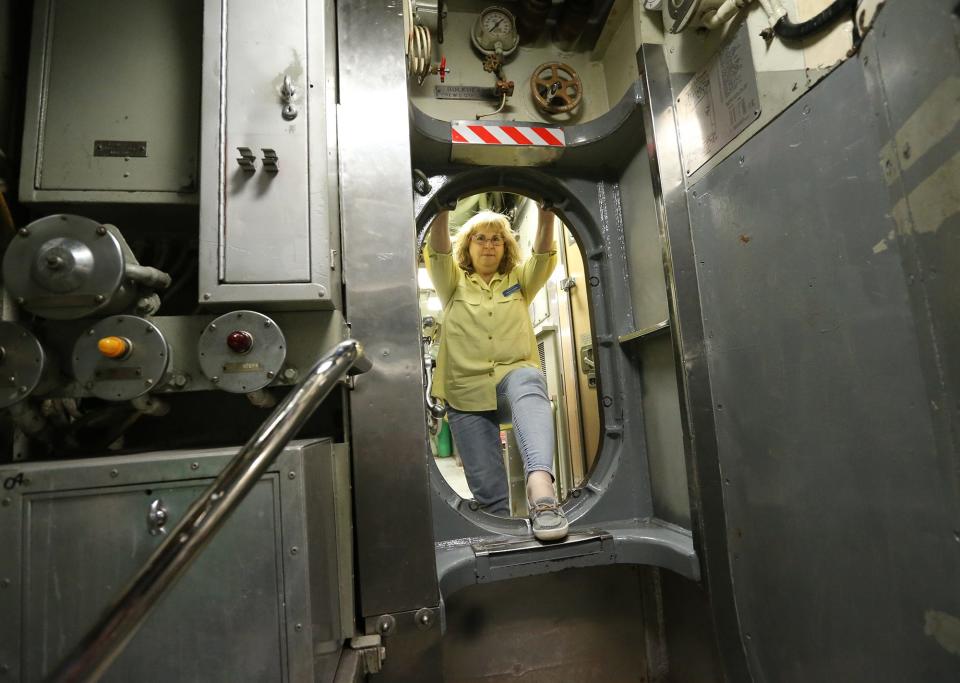
How Albacore became a museum
Despite its legendary status, the Albacore sat idle at Philadelphia Naval Shipyard for more than a decade after her decommissioning. It’s likely she would have been used for target practice and sunk to the ocean’s bottom if a visionary group of local citizens, including developer Joseph Sawtelle, hadn’t intervened.
To almost ludicrously summarize a complex and lengthy process, this group which became known as the Portsmouth Submarine Memorial Association eventually persuaded the Navy and the U.S. Congress to return the Albacore home to serve as a museum. The effort culminated in the epic 1985 engineering feat of dredging a channel, slicing thru Market Street, and hauling a Navy submarine over a marine railway. At one point, the sub got stuck in the mud and sat there for months like a steel-skinned beached whale.
I mean seriously — haven’t you ever wondered how a freaking submarine wound up perched so perfectly on display in a landlocked concrete cradle, located so many yards from the Piscataqua River?
As a result, visitors today can get a full view of both the outside and inside of this pioneering boat. There aren’t too many places where visitors can enjoy such a hands-on experience of intricate military hardware, whether taking the wheel of the Albacore or peeping through the periscope.
“It’s a landmark that’s one of a kind,” said Latchaw, a member of the park’s board for more than 15 years.
More local news: 110 Portsmouth employees earned $100,000 or more in 2022. Here's list of all salaries.
As the park commemorates the submarine's 70th year, supporters want to start working to expand the current facility beyond a celebration of Navy submarines and establish a maritime museum addressing other aspects of the area’s nautical history as well. This could include an addition to the current building.
But for now, making sure the Albacore’s legacy carries on for future generations to understand and appreciate is a more immediate concern. At 75 years old, Latchaw is one of the youngest of the Albacore’s surviving crewmembers, he said. An effort is under way to collect written memories from former sailors of AGSS 569 while there are still many among us.
“The more anecdotal information you get from the crew, the more you can add to the history of Albacore,” he said.
D. Allan Kerr is the author of "Silent Strength," a book about the remarkable men lost aboard the Portsmouth-built submarine USS Thresher in 1963.
This article originally appeared on Portsmouth Herald: USS Albacore: Research submarine turned museum turns 70; crew honored

 money
money 